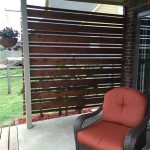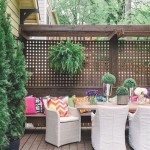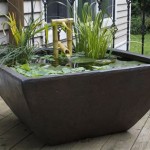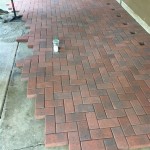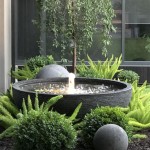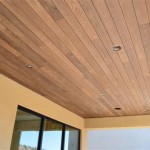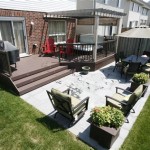Unlock the Beauty of French Patio Doors with Blinds Inside
French patio doors offer an elegant transition between interior living spaces and the outdoors. Their classic design, characterized by multiple glass panes and often a hinged opening style, brings natural light and enhances the aesthetic appeal of homes. However, managing light control, privacy, and energy efficiency with these doors can present unique challenges. Traditional window coverings, such as curtains or external blinds, may obstruct the doors' inherent beauty and functionality. This is where the concept of blinds inside French patio doors emerges as an innovative and increasingly popular solution.
Blinds inside French patio doors, also known as integrated blinds or between-the-glass blinds, are enclosed within the sealed double-pane or triple-pane glass unit. This design protects the blinds from dust, damage, and moisture, while also streamlining the appearance of the doors. These integrated systems offer a clean, modern look and address many of the drawbacks associated with conventional window treatments. This article will explore the advantages, considerations, and options available when considering blinds inside French patio doors.
Enhanced Aesthetics and Minimalist Design
One of the primary benefits of integrated blinds is their contribution to a clean, uncluttered aesthetic. Unlike curtains, drapes, or external blinds that hang outside the door frame, integrated blinds remain hidden within the glass unit. This preserves the visual appeal of the French patio doors and allows their architectural details to remain prominent. The smooth, flush surface created by the sealed glass unit complements a modern or minimalist interior design scheme. This is particularly appealing to homeowners who appreciate the clean lines and simplicity of contemporary aesthetics.
Furthermore, the absence of dangling cords or exposed hardware contributes to a safer environment, particularly for households with young children or pets. Integrated blinds eliminate the potential hazard of entanglement with cords, offering peace of mind and a more secure living space. The streamlined design also reduces visual clutter, making the space feel more open and spacious. The consistent and integrated appearance of the blinds from both the interior and exterior of the home contributes to a cohesive and polished look.
The integration of blinds within the glass also allows for greater design flexibility. Blinds are available in various colors, materials, and slat widths, allowing homeowners to customize the look of their doors to match their existing decor. The ability to choose from different control options, such as manual tilt or motorized operation, further enhances the user experience and allows for precise adjustment of light and privacy levels. This level of customization ensures that the blinds seamlessly integrate into the overall design of the home.
Improved Energy Efficiency and Insulation
Beyond aesthetics, integrated blinds offer significant improvements in energy efficiency. By adding an extra layer of insulation within the glass unit, these systems help to reduce heat transfer in both summer and winter months. During hot weather, the blinds can be tilted or closed to reflect sunlight and prevent excessive heat from entering the home. This reduces the reliance on air conditioning, leading to lower energy bills and a more comfortable indoor environment. Conversely, in cold weather, the blinds can be closed to provide an additional barrier against heat loss, helping to maintain a consistent temperature and reduce heating costs.
The sealed environment within the glass unit also eliminates air leakage, further enhancing the insulation properties of the doors. This is particularly important in older homes where drafts can be a significant source of energy loss. By minimizing air infiltration, integrated blinds contribute to a more energy-efficient home and a reduction in greenhouse gas emissions. The combination of improved insulation and reduced air leakage can result in substantial savings on energy bills over the lifespan of the doors.
Some integrated blind systems are designed with specialized coatings that further enhance their energy performance. Low-E (low-emissivity) coatings can be applied to the glass to reflect infrared radiation, reducing heat gain in the summer and heat loss in the winter. These coatings, combined with the insulating properties of the blinds, create a highly energy-efficient window system that can significantly improve the overall comfort and sustainability of the home. The long-term financial benefits of these energy-efficient features make integrated blinds a worthwhile investment for homeowners seeking to reduce their environmental impact and lower their utility costs.
Enhanced Privacy and Light Control
Integrated blinds provide excellent control over privacy and light levels. Unlike traditional window treatments that may be difficult to adjust precisely, integrated blinds offer a range of options for controlling the amount of light that enters the room. The slats can be tilted to varying degrees to allow for partial light penetration while maintaining privacy, or they can be fully closed to block out light completely. This level of control is particularly beneficial in bedrooms, bathrooms, or home theaters where privacy and darkness are essential.
The smooth operation of integrated blinds allows for quick and easy adjustments. Whether using a manual tilt mechanism or a motorized system, homeowners can effortlessly adjust the blinds to suit their preferences. This is especially convenient in rooms where lighting conditions change throughout the day. The ability to fine-tune the light levels ensures a comfortable and functional living space, regardless of the time of day or the weather conditions.
Furthermore, integrated blinds eliminate the need for bulky curtains or drapes that can clutter the space and obstruct the view. By maintaining a clear view of the outdoors while still providing privacy, these systems offer the best of both worlds. Homeowners can enjoy the natural beauty of their surroundings without sacrificing their personal space. The seamless integration of blinds within the glass also prevents shadows and silhouettes from being visible from the outside, further enhancing privacy and security. This feature is particularly valuable for homes located in densely populated areas or those with privacy concerns.
Reduced Maintenance and Increased Durability
One of the often-overlooked advantages of integrated blinds is their low maintenance requirements. Because the blinds are sealed within the glass unit, they are protected from dust, dirt, and moisture. This eliminates the need for regular cleaning, dusting, or washing that is required for traditional window treatments. The sealed environment also prevents the blinds from fading, warping, or becoming damaged by exposure to the elements. This results in a longer lifespan and reduced maintenance costs over time.
The durable construction of integrated blinds ensures years of reliable performance. The components are typically made from high-quality materials that are designed to withstand the rigors of daily use. The sealed environment protects the delicate mechanisms from damage, extending their lifespan and reducing the need for repairs. This is particularly important in high-traffic areas where doors are frequently opened and closed.
In addition to their inherent durability, integrated blinds are also resistant to allergens and mold. The sealed environment prevents the accumulation of dust and other allergens, making them a healthier option for individuals with allergies or respiratory sensitivities. The absence of moisture also prevents the growth of mold and mildew, which can be a common problem with traditional window treatments. This makes integrated blinds a particularly suitable choice for bathrooms, kitchens, or other areas where moisture is present.
Control Options: Manual vs. Motorized
Integrated blinds offer various control options to suit different preferences and needs. Manual control systems typically use a tilt mechanism located on the side of the door frame. This mechanism allows users to adjust the angle of the slats to control light and privacy. Manual systems are generally more affordable and require no electricity to operate. They are a simple and reliable option for homeowners who prefer a traditional approach.
Motorized control systems offer a more sophisticated and convenient way to operate the blinds. These systems use an electric motor to tilt or raise and lower the blinds. Motorized systems can be controlled using a wall switch, remote control, or even a smartphone app. This allows for effortless operation, even from a distance. Motorized systems are particularly beneficial for hard-to-reach windows or for individuals with mobility issues.
The choice between manual and motorized control depends on individual preferences and budget. Motorized systems offer greater convenience and control but come at a higher cost. Manual systems are more affordable and reliable but require more physical effort to operate. Both options provide the benefits of integrated blinds, including enhanced aesthetics, energy efficiency, and privacy. Homeowners should carefully consider their needs and priorities when deciding which control option is best for them.
Professional Installation and Considerations
Proper installation is crucial to ensure the long-term performance and durability of integrated blinds. It is recommended to have the doors with integrated blinds installed by a qualified professional who has experience with these systems. Professional installation ensures that the doors are properly sealed and that the blinds operate smoothly and efficiently. Incorrect installation can lead to air leaks, condensation, and other problems that can compromise the energy efficiency and longevity of the doors.
Before purchasing integrated blinds, it is important to consider the specific needs of the home and the available options. Factors such as the size and shape of the doors, the desired level of light and privacy control, and the overall design aesthetic should be taken into account. It is also important to choose a reputable manufacturer that offers high-quality products and reliable warranties. Researching different brands and comparing features and prices can help homeowners make an informed decision.
While integrated blinds offer numerous benefits, they may not be suitable for all situations. In some cases, traditional window treatments may be a more practical or cost-effective option. Homeowners should carefully weigh the pros and cons of integrated blinds before making a purchase. Consulting with a window specialist or interior designer can provide valuable insights and help homeowners choose the best window treatment solution for their needs.

6 Best Window Treatments For French Doors Louver Shutters

Mastering French Door Decor A Comprehensive Guide To Stylish Blinds And Privacy Solutions

Blinds Com French Door Blackout Cellular Shades

French Patio Doors Hinged Exterior

Window Treatments For Sliding Glass Doors Best Door Coverings

Custom French Door Window Treatments Sunburst Shutters Shades Blinds

French Door Hinged Patio Ideas Pella

Masonite 72 In X 80 Primed White Fiberglass Prehung Left Hand Inswing Mini Blind Patio Door W Brickmold Vinyl Frame 46613 The Home Depot

Patio Door Tips Advice Pella

Cover Glass Doors Plantation Shutters For Sliding
Related Posts

